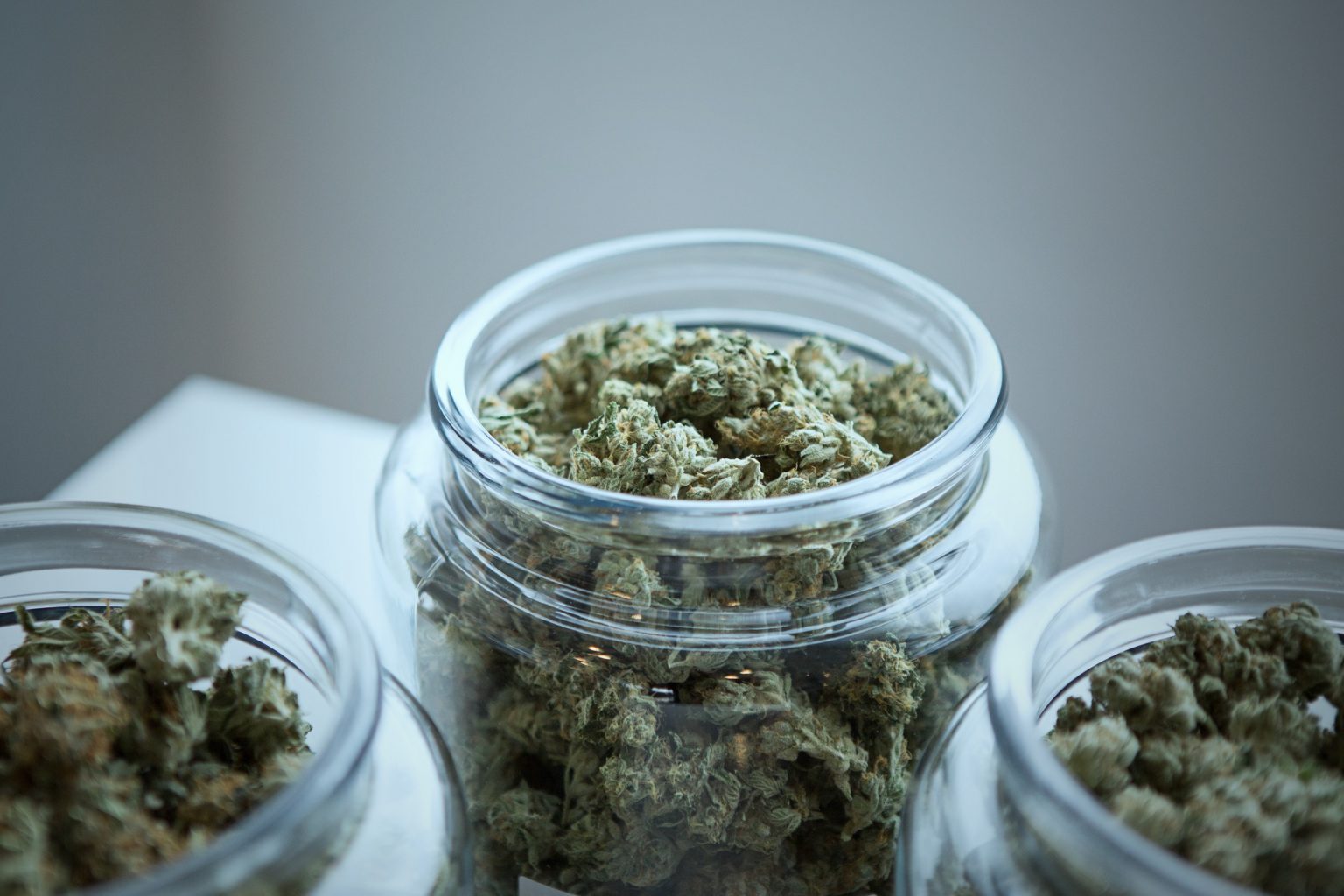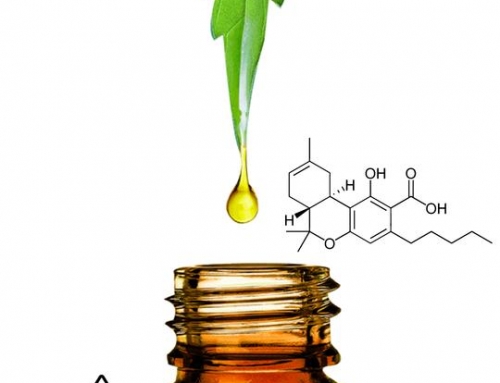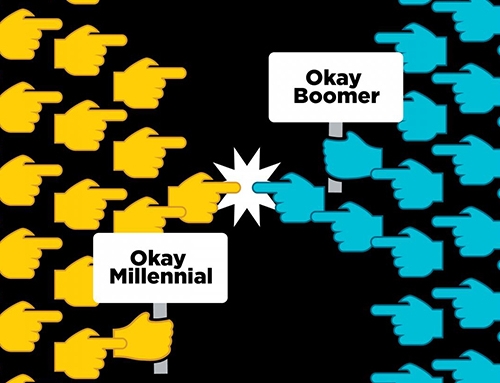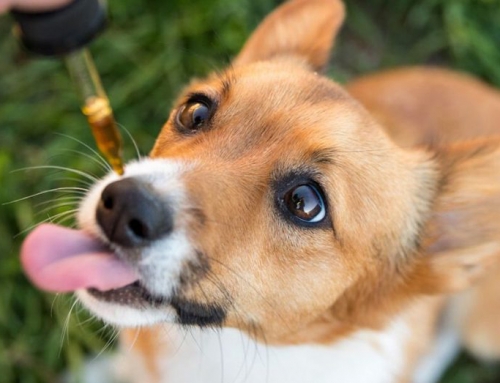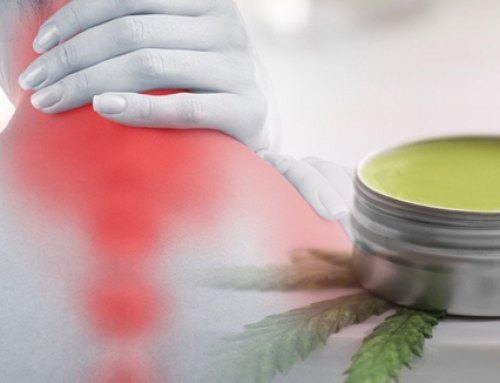However, there is a wide range of other medical conditions that could benefit from medical marijuana. Among them are nausea, spasticity, glaucoma, and movement disorders. Medical marijuana statistics show that patients report it to be a potent appetite stimulant for patients suffering from HIV, wasting syndrome, anorexia, or dementia.
While marijuana is still illegal on a federal level, 33 states have adopted laws that allow patients to consume medical marijuana prescribed for a wide variety of conditions.
What is Medical Marijuana?
Cannabinoids are substances in cannabis that affect the cannabinoid receptors in the bodies of mammals and improve the overall functioning of the endocannabinoid system. Cannabinoids (CBD) and Tetrahydrocannabinol (THC) are currently regarded as the most beneficial substances among cannabinoids, known for their high inducing properties.
Top Medical Marijuana Facts and Statistics (Editor’s Pick)
- By 2022, the marijuana retail sales are expected to amount to $7.3 billion.
- Medical marijuana is legal in 33 states.
- 93% of American voters supported the legalization of medical marijuana in 2018.
- The District of Columbia has the highest price per ounce of high-quality marijuana in the US, with an average price of $596 per ounce.
- One in five dispensary CBD and medical cannabis products failed on quality tests in California.
Medical Marijuana Laws
1. Under federal law, cannabis is defined as any Cannabis Sativa L. plant or product with more than 0.3% of THC and is still considered illegal.
While medical cannabis and/or CBD is legal per state law in a majority of states and the District of Columbia, cannabis and cannabis-derivatives remain Schedule I drugs, and thus illegal under federal law. Under this law, cannabis is defined as any Cannabis Sativa L. plant or product with more than 0.3% of THC by dry weight.
Individuals should be aware that shipping or traveling across the country with cannabis or any cannabis product is against federal law and could lead to federal prosecution.
2. The 2018 Farm Bill exempts hemp and hemp-derived products, including CBD from the Controlled Substances Act.
Previously, hemp-derivatives were classified as Schedule I cannabis products and were considered to have no acceptable medical use, with a high potential for abuse.
3. Over half of US states allow cannabis to be recommended and dispensed to people for medical reasons.
Those who purchase treatments through a dispensary and follow a recommendation from their physician are required to follow the regulations about the registration and renewal of medical cards and any other requirements set by the state they reside in. There is no federal standard for medical cannabis programs, and the requirements vary from state to state.
It is extremely important that one is familiar and complies with the laws and regulations of her state.
4. Medicinal marijuana is not FDA approved yet.
The FDA approval comes only after carefully conducted studies and clinical trials involving hundreds to thousands of human subjects to determine the benefits and risks of a substance or a medication. There haven’t been enough large-scale clinical trials yet to establish the benefits and side effects of the marijuana plant, as opposed to its CBD parts.
5. One in five CBD and medical cannabis products (dispensary sold) failed on tests in California.
Medical marijuana statistics revealed that one in five CBD and medical cannabis products failed quality tests and contained wrong doses or significantly less CBD than required.
Dispensary-grade CBD products and medical cannabis sold in state-run medical cannabis facilities must comply with state safety and testing guidelines laid out by state law and regulations.
6. The only FDA approved medicine so far is Epidiolex.
Epidiolex is a purified 98% oil-based CBD extract from the cannabis plant, and the first plant-based drug derived from the cannabis plant in the US. It is approved to treat seizures in people who are two years of age and older with Dravet syndrome and Lennox-Gastaut syndrome (LGS).
Studies of Epidiolex provided evidence that led to the FDA approval of this product on June 25, 2018. Researchers studied medicine in controlled clinical trials. Several clinical trials are currently active, including studies using Epidiolex in people with Tuberous Sclerosis Complex and Sturge-Weber Syndrome.
Types and Benefits of Medicinal Marijuana
7. Indica dominant strains have 23-30% of THC. They can sedate and relax.
Typically grown in harsh climates like Lebanon, Nepal, Afghanistan, and Morocco, Indica strains are best suited for stress relief and relaxation due to their predominantly sedating effect. Doctors usually prescribe Indica breeds for relieving body pain, alleviating anxiety and stress, reducing seizures, relieving spasms, and relaxing the muscles.
8. Pure Sativa has 14-20% of THC.
Sativa strains come with uplifting, invigorating effects suited for higher levels of activity. Sativas supposedly enhance creativity and have different flavors ranging from tart to sweet. They grow in Mexico, Colombia, eastern Thailand, and India.
Sativa cannabis strains are energizing, help fight depression, stimulate focus, and increase the flow of creativity. Pure Sativas grow better in the southern hemisphere and are harder to cultivate up north. They are rare in medical use in its pure form.
9. Ruderalis has only 2.5% of THC and is a rare but popular medicinal strain.
Medical marijuana usage of cannabis Ruderalis is not yet in full swing. Ruderalis originates from central Russia and has unique and distinguishable qualities. It has very little THC content and is not grown for recreational purposes.
Its high content of CBD is making it popular for medicinal strains. When it is cross-bred with Indica or Sativa, they use their unique ability to auto flower and have higher CBD content.
10. There are nearly 1,000 hybrids that provide a mixture of Indica and Sativa strains.
Most plants grown for medical use these days are hybrids. Multiple positive qualities of one breed are crossed with the other strain to allow for new and improved specimens with levels of THC or CBD desired for use.
Patients looking for the potential euphoric experience primarily choose THC-dominant strains, which are also frequently chosen by patients looking to treat pain, depression, anxiety, and insomnia. Those suffering from anxiety or looking to avoid the side effects of medical marijuana that are related to THC should avoid THC-dominant strains and choose those with high levels of CBD.
CBD-dominant strains usually have only a small amount of THC and are suitable for those who want the benefits of symptom relief while remaining completely non-intoxicated. Strains containing similar levels of THC and CBD are considered to be well balanced and can offer both symptom relief and the experience of euphoric high.
Side Effects of Medical Marijuana
11. Up to 60% percent of any conventional medication or drug has the potential to be affected by CBD.
Even though marijuana is a plant, it is broken down inside a person’s liver as any other medicine. The side effect of CBD is its potential inhibition of the cytochrome P450 enzyme system that regulates toxic substances metabolism.
The safety data from the trials in people with Lennox-Gastaut syndrome and Dravet syndrome has shown the following side effects – tiredness, diarrhea, and upset stomach.
CBD can slow the ability of the liver to eliminate a breakdown product of clobazam.
There is a certain small amount of risk of liver injury, often when CBD was combined with valproic acid (Valproate, DepakoteTM).
The benefits must heavily outweigh the downsides in order for it to be prescribed to minors.
12. Teenagers who were heavy marijuana users lost eight IQ points between the ages of 13 and 38.
If frequently used in the teenage years during the brain’s developing phase, marijuana can affect IQ levels and mental functions. Medical marijuana health statistics show a major health concern regarding teenage abuse of cannabis. Medical cannabis statistics and research found that those who started using marijuana as adults didn’t show IQ declines.
A New Zealand study conducted on medical marijuana usage in the teenage years showed that people who started smoking marijuana frequently during their teenage years lost eight IQ points on average between the ages of 13 and 38. The abilities deemed lost haven’t returned if the use of marijuana ceased in adulthood.
Medical Marijuana Users Statistics
13. 86% of adults in the US agree that cannabis has valid medical uses and should be legalized everywhere.
The majority of adults in America believe that marijuana should be legalized for both medical and recreational purposes (53%). Less than 8% think it should stay completely illegal, while
28% of adults think that cannabis is a dangerous drug.
Around 63% of Iraq and Afghanistan veterans support the legalization of medical marijuana, while 44% support legalization for recreational purposes. With limited treatment for PTSD, some veterans turn to cannabis as a way to regulate depression, anxiety, insomnia, and suicidal thoughts.
14. 49% of cancer patients say their symptoms were managed well by medical marijuana.
Medical marijuana can help cancer patients fight nausea, reduce vomiting, improve appetite, regulate insomnia, and provide neuropathic pain relief. While each condition reacts to the treatment differently, only 6% of patients report they did not experience significant improvement of the cancer-related symptoms while using medical marijuana.
15. Statistics show that California has the highest number of legal medical marijuana patients.
With a total of 915,845 patients, California is in the lead, followed by Michigan with 269,553 confirmed patients. Arizona had the third-highest number of confirmed medical cannabis patients with 169,478 confirmed cases as of 2018. With only 1,054 registered users, Alaska had the least number of legal medical marijuana patients in the US.
Statistics on Medical Marijuana Market and Industry
16. Medical marijuana stats show that 33% of the world cannabis market belongs to medicinal marijuana.
Arcview Market Research and BDS Analytics report that the total worldwide spending on legal cannabis will climb to $57 billion by 2027. The industry is divided into two major segments, with the recreational cannabis market taking up 67% of the pie, while medical marijuana is expected to cover the remaining 33%.
17. In 2018, sales of cannabis reached $10 billion. By 2020, they are expected to climb to $14.5 billion.
By 2025, the jump from the $21.56 billion last year is expected to reach the forecasted $23 billion. The estimated sales of marijuana-derived CBD and hemp-derived CBD will amount to $647 million and $646 million by 2022, respectively.
18. The annual medical marijuana revenue statistics show that regulated dispensaries revenue went over $3 million.
Regulated dispensaries reached over $3 million in revenue, while the unregulated medical marijuana dispensaries across America only generated the annual revenue of $740,000.
According to the analyses over the last three years, setting up an unregulated medical marijuana dispensary roughly costs $100,000, while starting a business as a regulated dispensary requires $775,000.
19. Medical marijuana retail sales reached $4.5 billion in 2018.
Statistics tell us that by 2022, the medical marijuana retail sales should record a substantial rise, going up to $7.3 billion, which is an increase from the estimated $6.1 billion in 2020.
Companies that fall under the category of ancillary services, technology, and products, had the highest number of medical cannabis businesses in the US (13,000-18,000), leaving behind cultivators, labs, infusion manufacturers, and medical dispensaries.
Medical dispensaries/recreational stores had the second-highest number of medical cannabis businesses in the US, with a range between 3,300-4,300 businesses in total in that category.
Testing labs had the lowest number of medical cannabis businesses in the US, with a range of only between 100 and 150 businesses.
20. Medical marijuana data shows that Michigan has the highest number of medical cannabis production licenses (215).
Montana was second with 135 production licenses. Arizona had issued 130 medical cannabis production licenses, followed by Maryland with only 37 licenses. In 2018, Minnesota had the least number of medical cannabis production licenses issued (2).
FAQ
Can medical marijuana help with seizure disorders?
Patient reports and early lab evidence suggest that cannabidiol can potentially help control seizures. A number of studies have shown the benefit of a specific plant-based CBD product in treating specific groups of people with epilepsy who have not responded to traditional therapies.
Which states allow medical marijuana?
Medical marijuana is legal in 33 US states and the District of Columbia:
Alaska, Arizona, Arkansas, California, Colorado, Connecticut, Delaware, District of Columbia, Florida, Hawaii, Illinois, Louisiana, Maine, Maryland, Massachusetts, Michigan, Minnesota, Missouri, Montana, Nevada, New Hampshire, New Jersey, New Mexico, New York, North Dakota, Ohio, Oklahoma, Oregon, Pennsylvania, Rhode Island, Utah, Vermont, Washington, and West Virginia.
States that allow restricted use of medical marijuana include: Alabama, Florida, Georgia, Iowa, Kentucky, Louisiana, Mississippi, Missouri, North Carolina, South Carolina, Virginia, Wisconsin, and Wyoming.
What conditions qualify for medical marijuana?
While the list of conditions that can be treated with cannabis keeps growing, stats show that not all of them get this treatment across all states. However, some conditions are recognized as qualifying for medical marijuana treatments everywhere.
These are ADD/ADHD, HIV/AIDS, anorexia, arthritis, cachexia (wasting syndrome), cancer, chronic pain (headaches, joint pain, acute/traumatic injury, back pain, tendinitis, sinus pain, carpal tunnel syndrome), epilepsy/seizures, glaucoma, and PTSD.
However, disorders such as depression, anxiety, and insomnia are conditions for which medical cannabis is most sought for, even though not many states have them on the list of conditions that qualify for a card.
Medical Marijuana Stats Conclude that the Pros Outweigh the Cons
It is opening the way for other clinical studies that will bring forth the standardization and solutions that the budding cannabis market and its consumers are eagerly waiting for.
Originally Published by cannabisoffers.net

